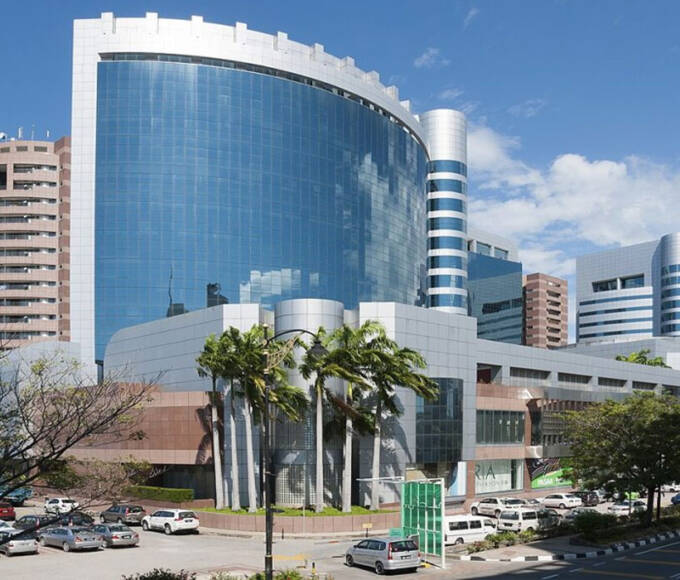Did you know that, at present, over 55% of total website traffic comes from mobile devices? This extent of mobile usage to visit or explore websites has made it necessary to have one website that fits all devices. This has become possible today with the help of optimizing your website with a Responsive design. No matter which device you use to access a website, a responsive design will render you the same layout of the website every time.
In this article, you shall learn about the role of responsive design to cater to the needs and preferences of modern users.
Begin,
What do you mean by Responsive Design?
Responsive design is an innovative approach where a website intuitively adjusts its layout, content, and visuals to fit the user’s device, skillfully removing the need for different versions for desktop and mobile. This efficient method reduces costs in web development and maintenance and guarantees a smooth experience for users on any device. Experts in responsive web design, such as Eversite’s web design and maintenance professionals, use adaptable layouts, media queries, and fluid grids to make your website respond seamlessly to different screen sizes. Their knowledge becomes even more vital in the mobile-first era, initially focusing on creating mobile-friendly websites and then expanding them for larger screens. This strategy ensures your website is always accessible and aesthetically pleasing, underlining the critical role of professional designers in shaping the modern digital world.
The responsive website employs flexible layouts, media queries, and a fluid grid. These elements allow your website to adjust the design based on the user’s screen size. With the advent of the mobile-first design, website owners started a mobile-first approach that ensures a mobile-friendly web design first and then scales it to larger screens.
What are the Benefits of Responsive Web Design?
Responsive design brings many lucrative benefits to the website as well as to users too. Some of the key benefits that responsive design brings to the table are as follows:
1. Enhanced User Experience
Responsive design is literally the synonym for a better user experience. It aims to provide an enhanced user experience to visitors irrespective of the devices they use. With a responsive design, websites can establish a seamless navigation experience for their visitors. Also, a responsive design makes sure that the content is easily accessible and readable, which leads to higher user engagement.
2. SEO Benefits
Did you know that search engines like Google consider mobile-friendly aspects of a website for ranking? Moreover, a single URL for your website saves you from the trouble of content duplication issues and streamlines your SEO efforts further.
3. Cost efficient
Managing a single website is always cost-effective as compared to having a separate website for desktop and mobile devices. Don’t you think? With a responsive design, you just have to focus on one website for content updation and maintenance, which reduces time and human effort.
What is the process for implementing responsive website design?
A responsive web design implementation includes the following steps:
1. Choosing a responsive framework
According to web design Toronto experts, begin your web design work, and select a framework that aligns with your business objectives. Some of the popular frameworks include Bootstrap, foundation, and CSS Grid. These frameworks come with in-built tools and grids that can streamline your website design work.
2. Plan the layout and content structure
In this step, certain the layout and the structure with a mobile-first approach. Start with mobile devices with small screen sizes and then implement the same to devices with large screens. Plan how the website will resize or rearrange with different screen sizes.
3. Create a fluid grid system
It is a design concept wherein the elements of a website fit automatically as per the device used by the users. In a fluid grid, web developers use relative units such as percentages to set the width of a web page element. These relative units allow the elements to expand or squeeze on the basis of space available across different mobile devices.
4. Implement media queries
Media queries are a blockchain in CSS that apply a certain style or rule to a web page based on certain conditions. When a web page is loaded, the browser checks for media queries to identify the condition of the user’s mobile device. If the conditions are met, the style within the media queries is applied. For Example. Suppose you want to increase the font size on your website for mobile devices with a 500-pixel width. You can do so by using media queries. Now when the user’s browser identifies the predetermined condition of your code, the said rule will apply, providing you with an increased font size.
5. Optimize images and media
Large-size images can lead to slow page loading, which lowers the user experience of your visitors. Optimize your website by reducing the size of the images and selecting the right image format
6. Ensure touch friendly interaction
The need to design visual elements for touch gestures is critical for mobile devices. Make sure the web elements, such as buttons, sandwich bars, and other interactive elements, are big enough for users to interact properly.
7. Monitor and maintain
Once your website is live, monitor its performance and the feedback of the users. Regularly update your website with the latest technology and trends to remain relevant in the industry.
The Future trend for responsive web design
As technology continues to evolve and grow, new trends in the work of responsive design are expected to surface. Some of the future trends are as follows:
The use of wearable devices increase
With the increase in the popularity of smart wearables such as the Apple Watch, developers will have to optimize the content and the visual elements on these tiny screens.
5G
The coming of 5G technology means an even faster internet connection for users. This will further increase the expectations of the users to experience a fast, responsive website.
Final Words!!
In the end, the need for a responsive design for your website is indispensable to attract and engage modern smart users. With the coming of diverse smart devices in the market, users expect that the websites they engage with should provide them with a seamless experience. Also, keep in mind that the implementation of responsive design not only provides you with an enhanced experience but also SEO benefits which help rank your website better on the SERP.
By implementing the above-discussed points, website owners can have an idea and knowledge to go with their responsive design work. Remember that in this digital era, a responsive design can unlock the true potential of your website for success.








